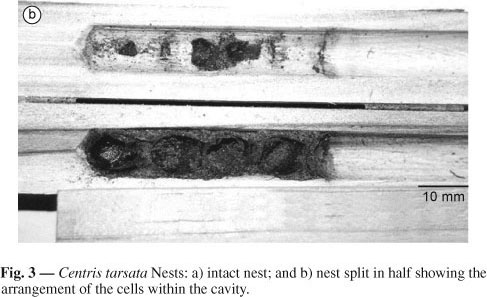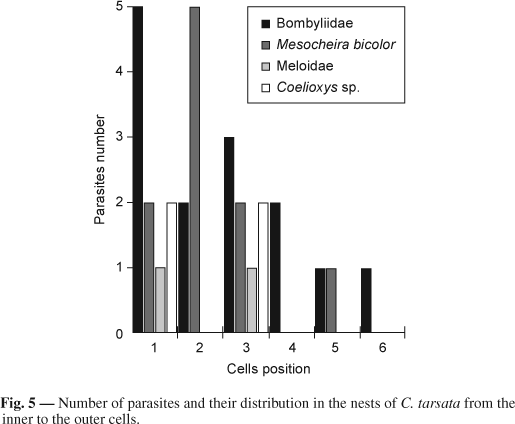A total of 67 nests of Centris tarsata were obtained from wood trap-nests of different diameters, consisting of a linear series of brood cells built with sand mixed with oil. This species showed a preference for open habitats, since it occurred only in Swamp and Grassland areas and has never been found in the Araucaria forest. Nesting activity was bigger during the hot season, especially in December and January. The Sex ratio was of 1.48:1 (females/males), significantly different from 1:1. The females were larger than the males and these showed no dimorphism. Males were produced in the outermost cells and females in the innermost cells. C. tarsata presented a direct development without diapause in larval stage. They overwinter as adults. Development time was similar for males and females. Natural enemies are Bombyliidae Mesocheira bicolor, Coelioxys sp. and Meloidae.
nesting biology; bee; Apidae; Centris tarsata











